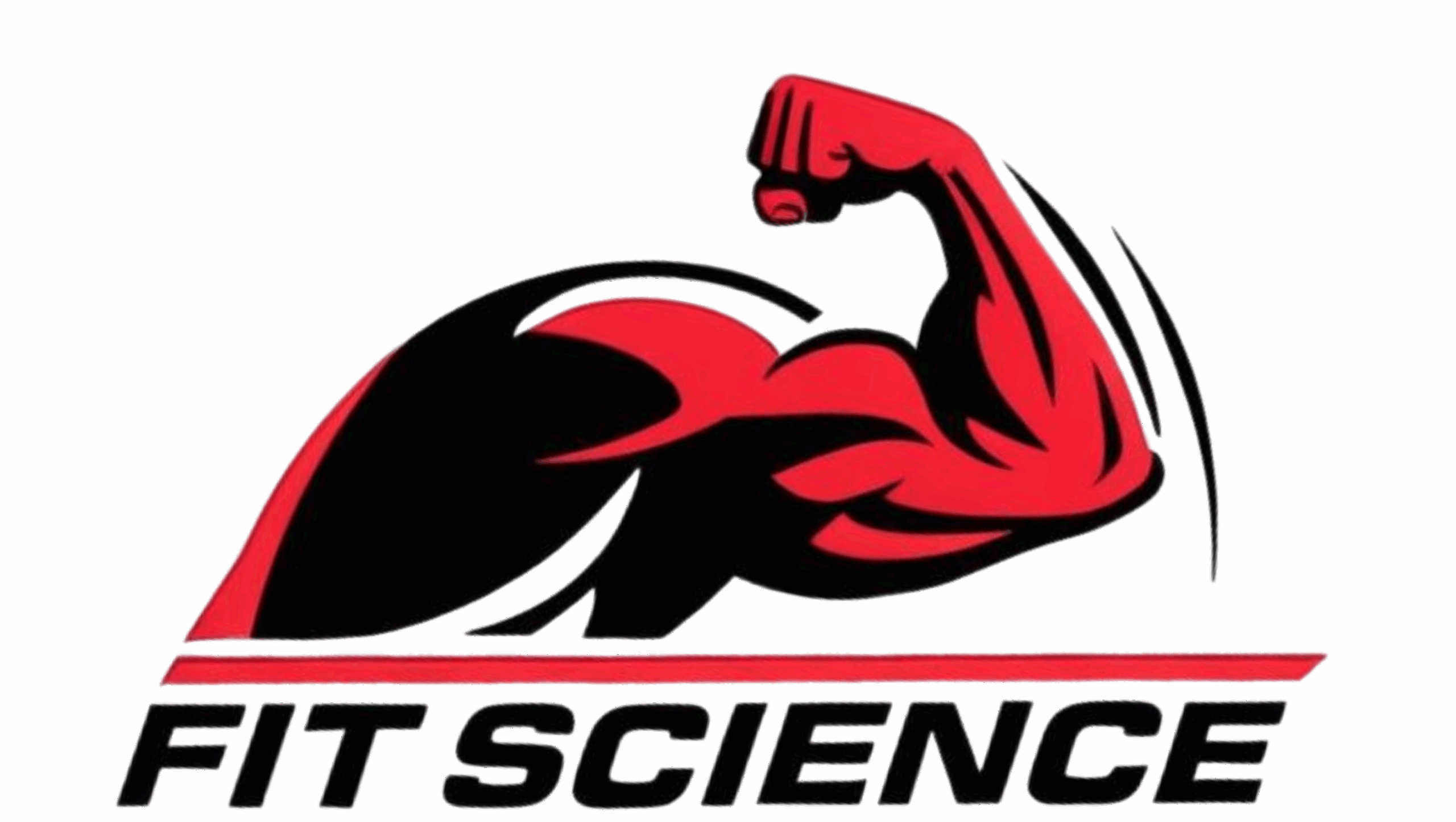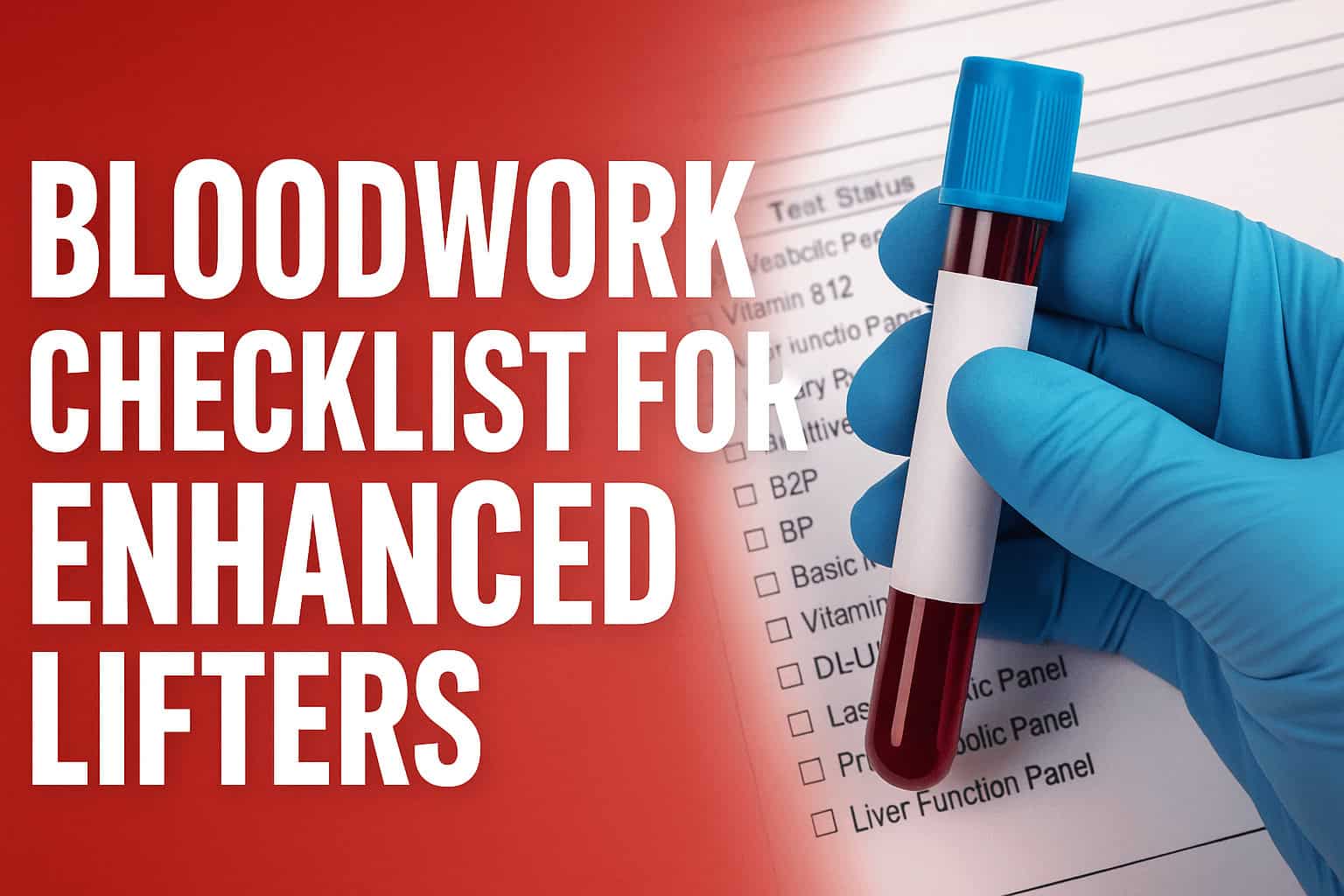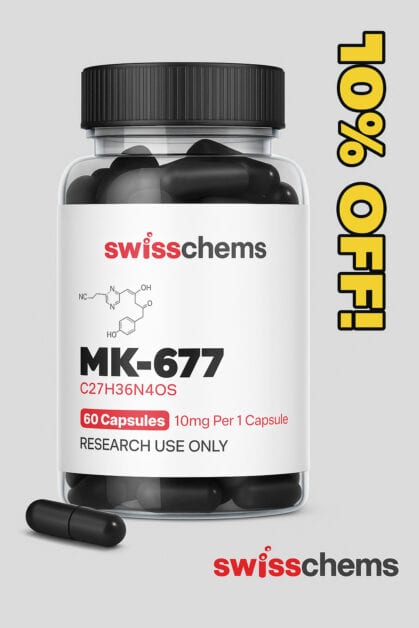🧪 Bloodwork Checklist for Enhanced Lifters: What to Test, When, and Why
💭 Why Bloodwork Should Be Non-Negotiable for Enhanced Athletes
If you’re using SARMs, TRT, peptides, or anabolic steroids — you’re officially in the enhanced category. And while the gains can be phenomenal, so can the risks… if you’re not monitoring what’s going on under the hood.
Bloodwork isn’t just a precaution — it’s your early warning system, your progress bar, and your recovery report all in one. The smartest lifters use labs not just to avoid damage, but to optimize every cycle.
This guide walks you through exactly what to test, when to test it, and why each marker matters.
🧬 Pre-Cycle Bloodwork: Your Baseline Blueprint
When to test: 2–4 weeks before starting any SARM, steroid, or peptide protocol
This is your “before” snapshot — the data that tells you what your body looks like before any enhancement begins.
| Marker | Why It Matters |
|---|---|
| Total Testosterone | Measures your base T level (esp. before suppression) |
| Free Testosterone | The active, usable testosterone — more important than total |
| LH / FSH | Indicates natural T production function |
| Estradiol (E2) | Keeps libido, mood, and recovery in check |
| Lipid Panel | Steroids and SARMs can crush HDL and spike LDL |
| Liver Enzymes (ALT, AST) | Many compounds are hepatotoxic — watch for elevation |
| Kidney Function (BUN, Creatinine) | Elevated creatinine can indicate strain or dehydration |
| CBC (Complete Blood Count) | HCT and RBC can elevate — affecting blood thickness |
| SHBG (Sex Hormone Binding Globulin) | Influences free T and SARM effectiveness |
| TSH / T3 / T4 (Thyroid Panel) | Especially important for those using peptides or T3/T4 stacks |
Optional:
-
Prolactin (if running Deca, Tren, or other progestins)
-
IGF-1 (before growth hormone secretagogues like MK-677 or CJC-1295)
-
CRP (C-Reactive Protein) for inflammation and cardiovascular risk
💉 Mid-Cycle Bloodwork: The Real-Time Checkpoint
When to test: Week 4 or midpoint of your cycle
Now you’re in the thick of it. Mid-cycle labs help you adjust before things go south — especially if you’re running suppressive or hepatotoxic compounds.
Prioritize:
-
Liver enzymes (ALT, AST)
-
Lipids (HDL, LDL, Triglycerides)
-
Estrogen (E2)
-
Total and Free Test (if using test base or natural production is a concern)
-
CBC for hemoglobin, hematocrit, RBC
-
Blood pressure (in clinic or via cuff)
Mid-cycle is where hidden problems show up — and it’s your best shot to prevent long-term damage or crash symptoms later.
🧪 Post-Cycle Bloodwork: The Recovery Report
When to test:
-
3–4 weeks after your last dose
-
OR after completing PCT
Post-cycle bloodwork tells you if your body bounced back or if you’re still suppressed. It helps decide if you’re ready to bridge, cruise, or re-enter a natural phase.
Must-test markers:
| Marker | What to Look For |
|---|---|
| LH/FSH | These should be rebounding if your HPTA is recovering |
| Total + Free Test | Should return to pre-cycle baseline or higher |
| Estradiol | Should normalize post-cycle — watch for rebound estrogen |
| Liver, Kidney Panels | Ensure detox and recovery post-cycle |
| Lipid Panel | HDL often stays suppressed longer — track recovery |
| IGF-1 | May stay elevated if you ran GH or secretagogues |
🧠 Advanced & Optional Panels (2025 Protocols)
Enhanced lifters in 2025 are starting to monitor even more precise metrics. Here’s what elite biohackers are testing:
| Marker | Why It’s Valuable |
|---|---|
| ApoB | Superior marker for cardiovascular risk (more precise than LDL) |
| Lp(a) | Genetic cholesterol marker — can’t be changed by lifestyle |
| Insulin + Fasting Glucose | Important with MK-677 or HGH |
| Ferritin + Iron Panel | High RBC from anabolics? Check iron storage |
| DHEA-S / Pregnenolone | Precursor hormones that crash post-cycle |
| Cortisol (AM serum) | Key for stress, recovery, and immune suppression |
| DHT (Dihydrotestosterone) | Influences hair loss, libido, aggression |
| Homocysteine | Cardiovascular inflammation risk marker |
| Vitamin D | Commonly low, but vital for recovery & immunity |
📅 Bloodwork Timing Cheat Sheet
| Phase | When to Test | Goal |
|---|---|---|
| Pre-cycle | 2–4 weeks out | Establish baseline + red flag scan |
| Mid-cycle | Week 4–6 | Catch liver/lipid/estrogen issues early |
| Post-cycle | 3–4 weeks after | Verify recovery & endocrine rebound |
| Cruise Phase | Every 8–12 weeks | Monitor TRT or long-term effects |
🧪 Best Labs for Enhanced Lifters (U.S.)
-
PrivateMDLabs – Great pricing, anonymous ordering, nationwide LabCorp access
-
Ulta Lab Tests – A la carte hormone testing with fast turnaround
-
Life Extension Panel – Affordable full-spectrum health screening
-
Your Local Clinic – For those on TRT or with a cooperative doctor
✅ Final Word: Test. Don’t Guess.
Bloodwork doesn’t just keep you safe — it helps you grow smarter, recover faster, and get more from every cycle. It gives you data that tells a story: of stress, recovery, suppression, and optimization.
Whether you’re running SARMs, low-dose TRT, or full blast and cruise — this checklist is your roadmap to doing it responsibly and sustainably.











